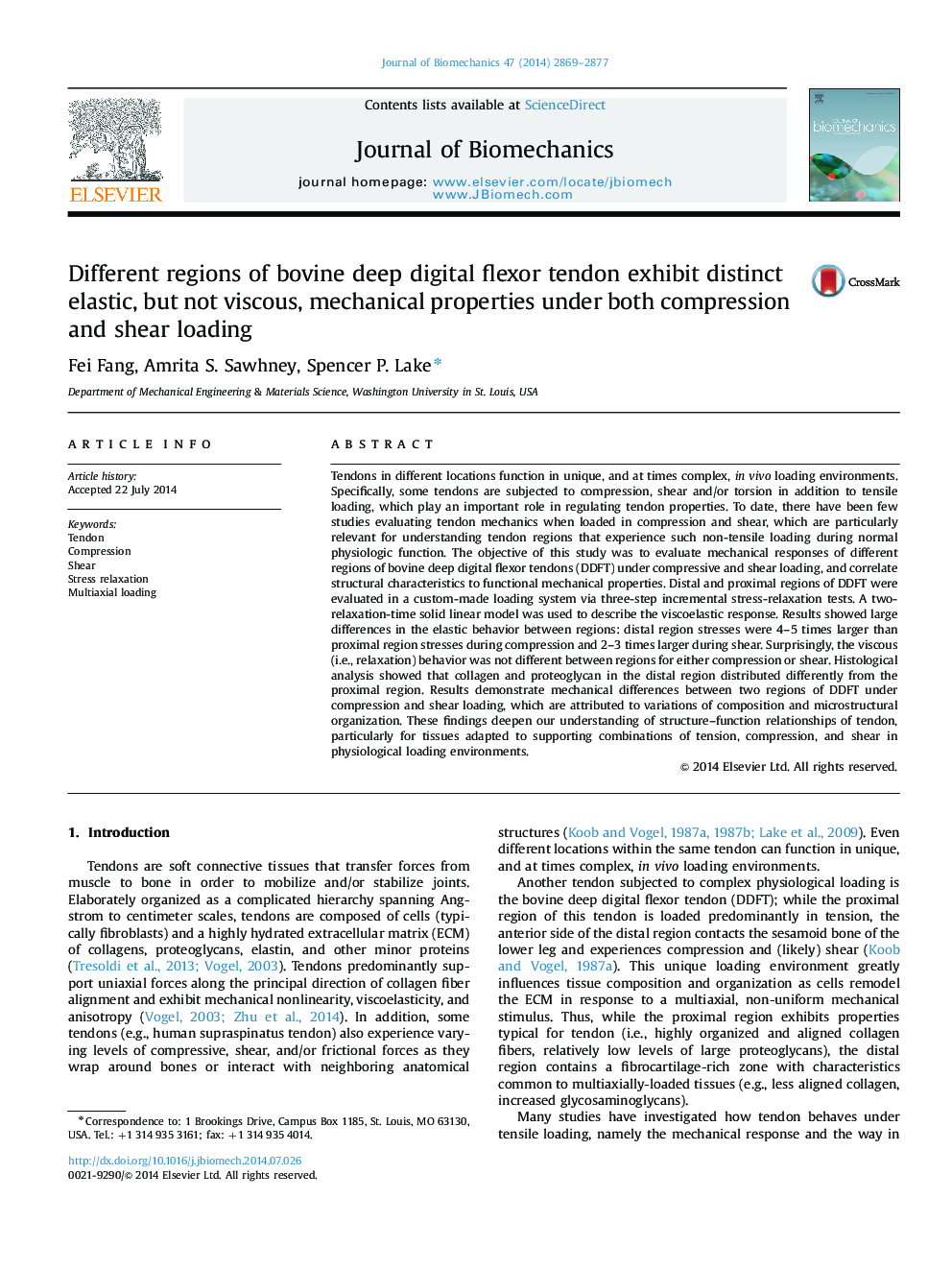| Article ID | Journal | Published Year | Pages | File Type |
|---|---|---|---|---|
| 10432096 | Journal of Biomechanics | 2014 | 9 Pages |
Abstract
Tendons in different locations function in unique, and at times complex, invivo loading environments. Specifically, some tendons are subjected to compression, shear and/or torsion in addition to tensile loading, which play an important role in regulating tendon properties. To date, there have been few studies evaluating tendon mechanics when loaded in compression and shear, which are particularly relevant for understanding tendon regions that experience such non-tensile loading during normal physiologic function. The objective of this study was to evaluate mechanical responses of different regions of bovine deep digital flexor tendons (DDFT) under compressive and shear loading, and correlate structural characteristics to functional mechanical properties. Distal and proximal regions of DDFT were evaluated in a custom-made loading system via three-step incremental stress-relaxation tests. A two-relaxation-time solid linear model was used to describe the viscoelastic response. Results showed large differences in the elastic behavior between regions: distal region stresses were 4-5 times larger than proximal region stresses during compression and 2-3 times larger during shear. Surprisingly, the viscous (i.e., relaxation) behavior was not different between regions for either compression or shear. Histological analysis showed that collagen and proteoglycan in the distal region distributed differently from the proximal region. Results demonstrate mechanical differences between two regions of DDFT under compression and shear loading, which are attributed to variations of composition and microstructural organization. These findings deepen our understanding of structure-function relationships of tendon, particularly for tissues adapted to supporting combinations of tension, compression, and shear in physiological loading environments.
Related Topics
Physical Sciences and Engineering
Engineering
Biomedical Engineering
Authors
Fei Fang, Amrita S. Sawhney, Spencer P. Lake,
